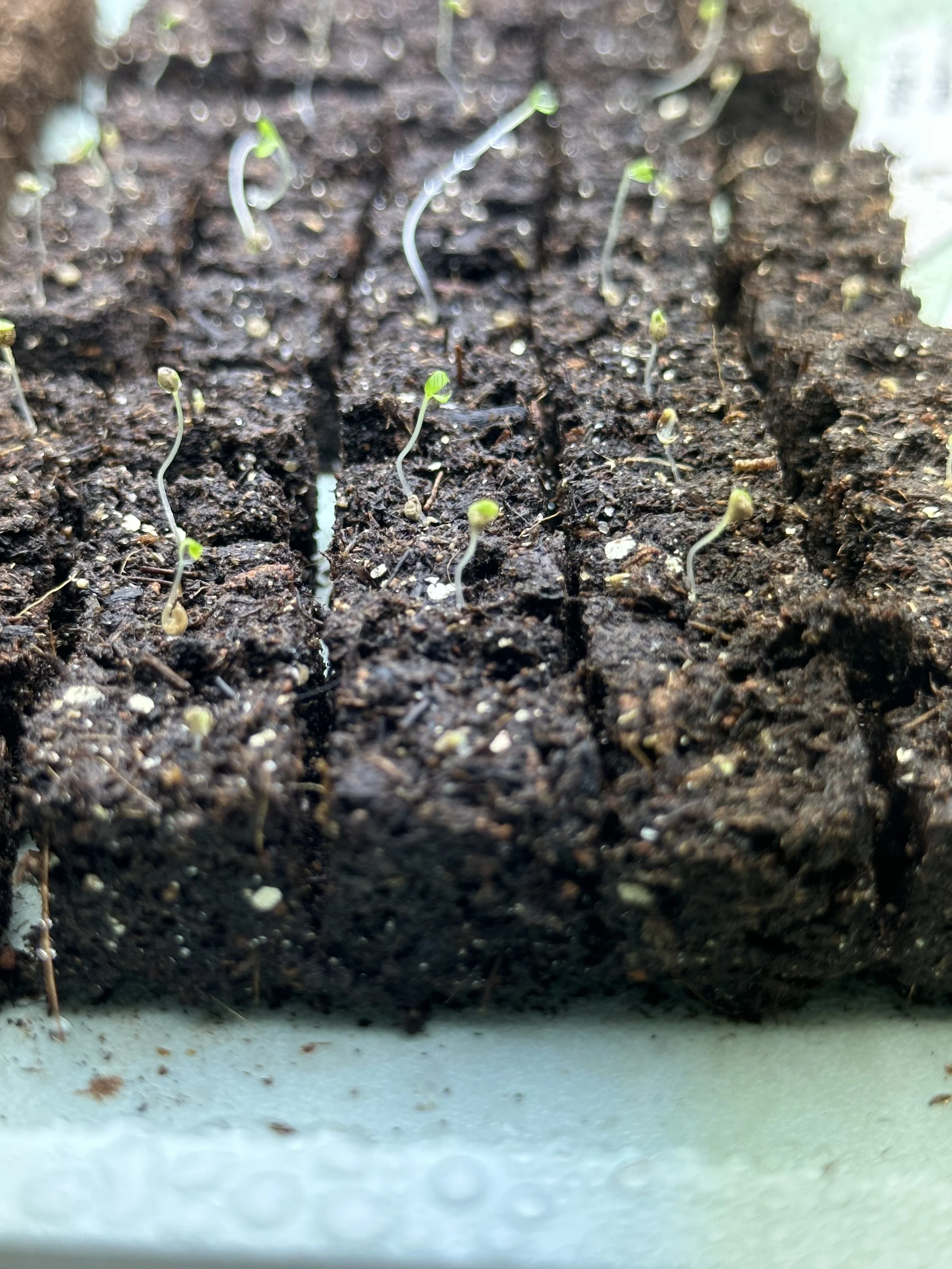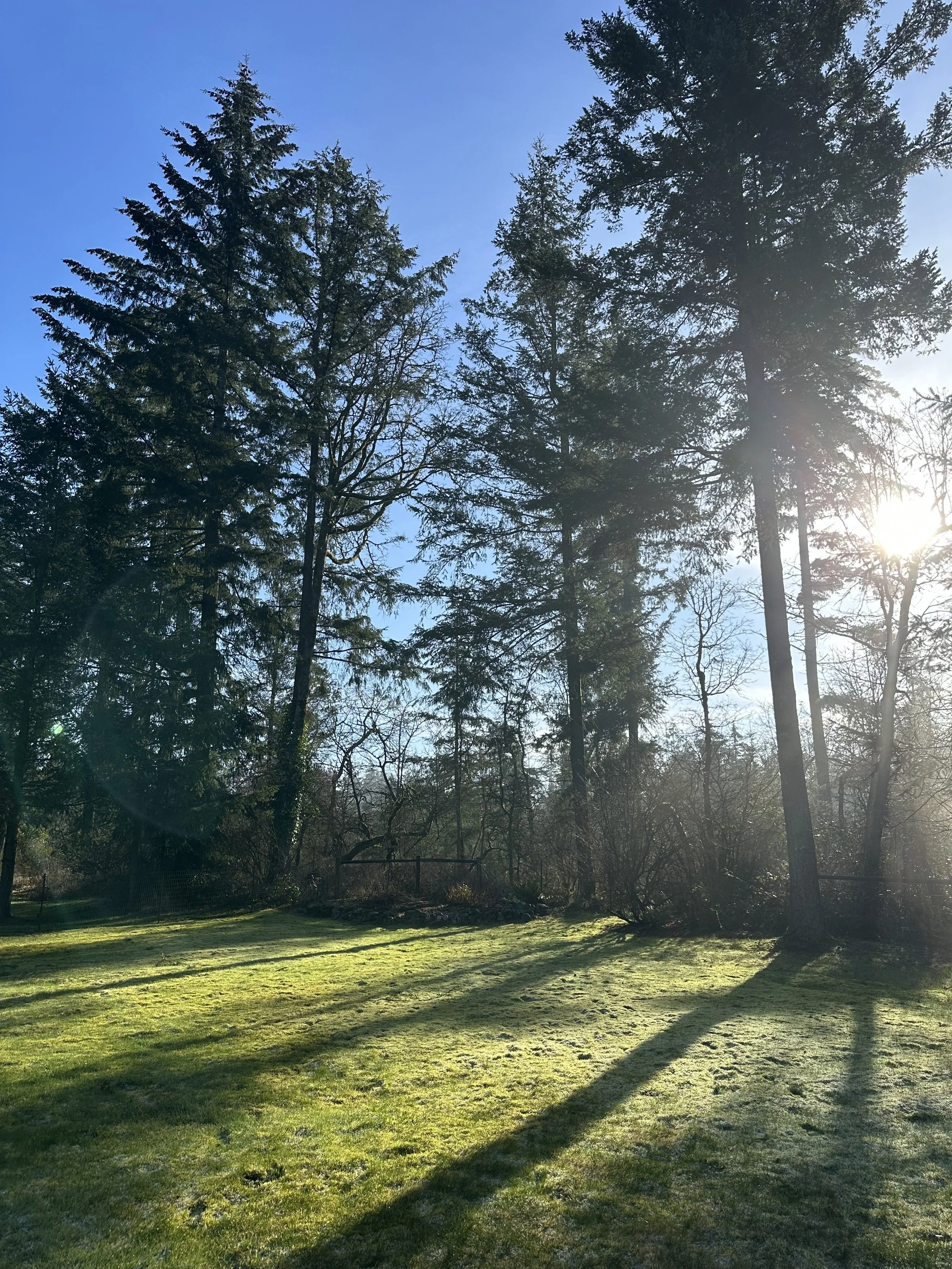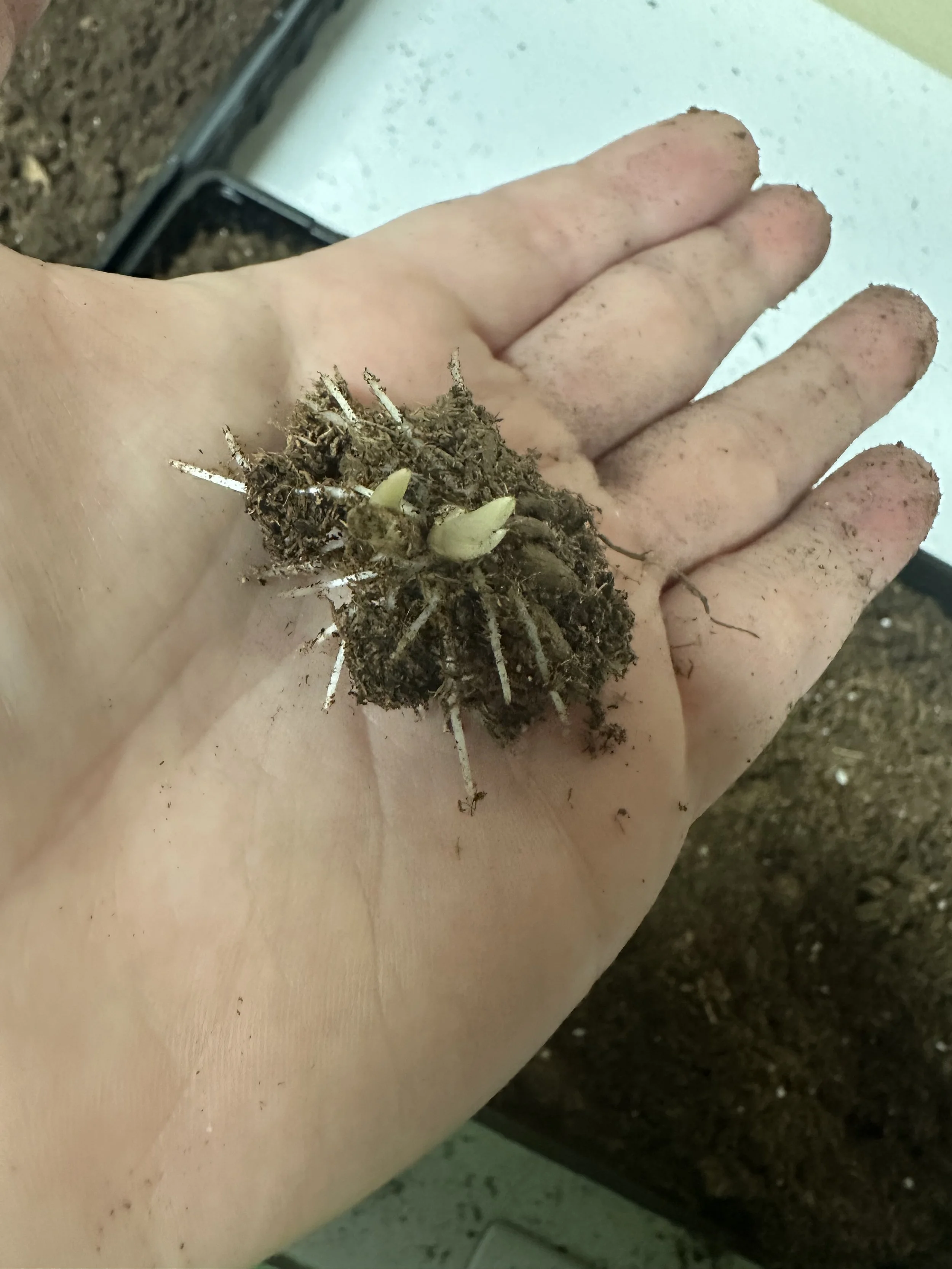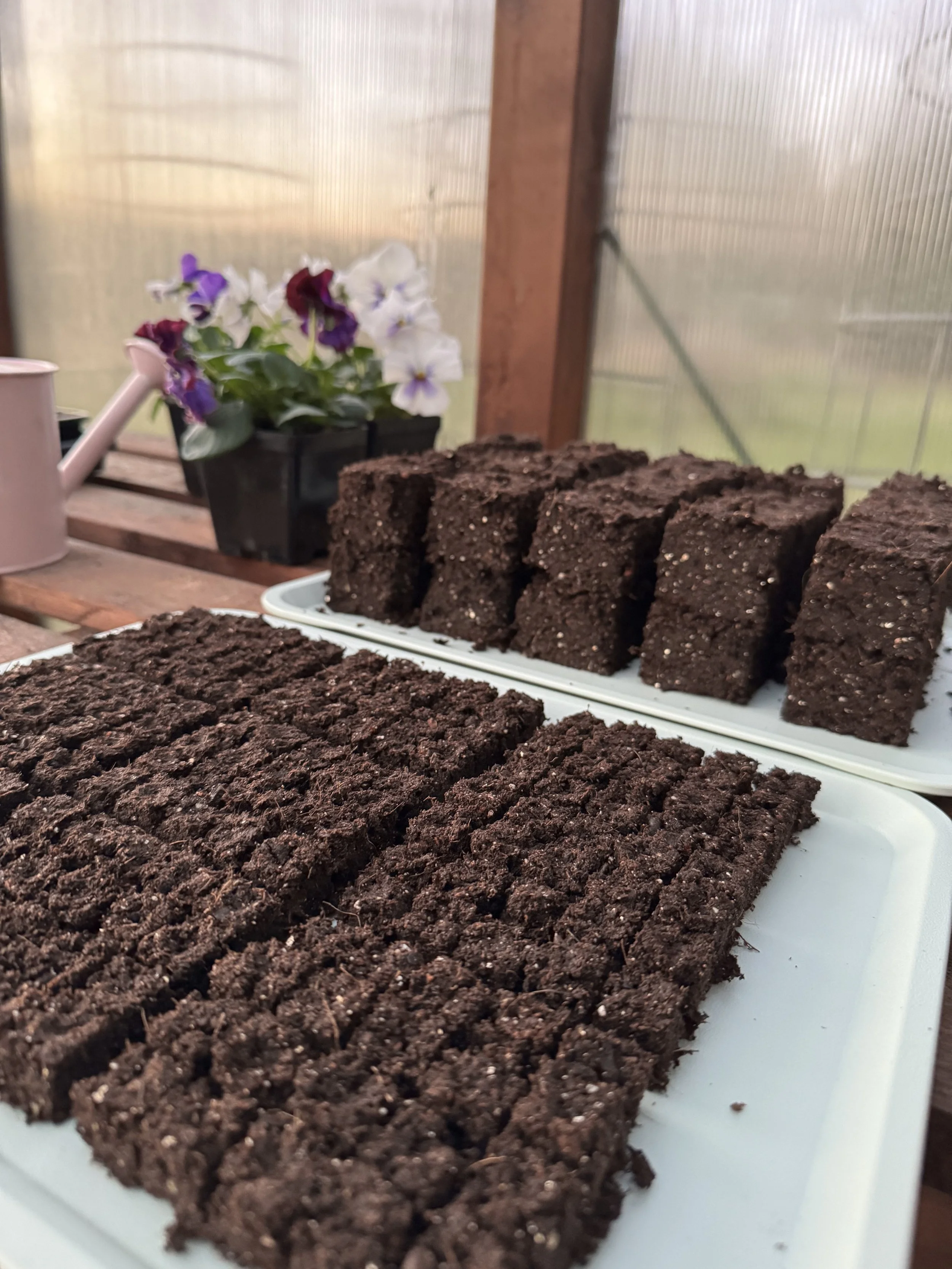January & February Seed Starting: Experiments, Setbacks, and Catching Up
One of my favorite things about being a new flower farmer is the experiments I get to run—a perfect blend of science and beauty. As a biologist by trade, I love observing how plants respond to different conditions, and flower farming has given me endless opportunities to test, tweak, and learn.
Last fall, I stumbled upon the book Cool Flowers by Lisa Mason-Zeigler, and it completely changed the way I approach seed starting. Before reading it, I assumed most flowers needed to be started in spring. But her method of fall planting cold-hardy annuals opened my eyes to a whole new strategy—one that could lead to stronger plants and earlier blooms.
Fall Experiment: Testing Hardy Annuals in the Greenhouse vs. Outdoors
Armed with this new knowledge, I set out on my own experiment: Would certain hardy annuals survive our Zone 8b winter if planted in the fall? I decided to test them in two conditions:
Unprotected outdoors in my cutting garden
Inside my unheated greenhouse
For my outdoor test, I planted Snapdragons, Bachelor Buttons, Yarrow, and Sweet Peas directly in the cutting garden to see if they could handle our winter on their own. So far, they’re all doing great—and they even just survived their first snow! Seeing them push through the cold reassures me that fall planting is worth the effort.
Inside my unheated greenhouse, I started Pansies, Snapdragons, Bachelor Buttons, Calendula, Nigella, Carnations, Feverfew, Yarrow, and probably a few more I’ve forgotten! Washington winters are fairly mild, but January and February can still get down to the low 20s, and my greenhouse offers no additional heat.
So far, the results have been incredible—all of these hardy annuals are still thriving! The only issue? Some of them have outgrown their soil blocks, which isn’t ideal this early. But overall, I’m so grateful I started them in the fall. It has given them a strong head start for the season ahead.
January: The Month That Didn’t Go as Planned
My plan for January was ambitious. I wanted to go all in on seed starting—sowing a second round of cold-hardy annuals and adding new varieties to the lineup.
But life had other plans.
Early in the month, my grandpa underwent surgery for pancreatic cancer, and our family was consumed with worry. On top of that, we got hit with not one, but two brutal sicknesses that tore through our household. If you’ve ever been sick while taking care of a sick toddler, you know how exhausting it is—it felt like the whole month was spent in survival mode.
Before I knew it, January was over. My carefully planned seed-starting schedule? Out the window.
February: Playing Catch-Up
Now that February is here, I’m about a month behind on starting many of my flowers. But instead of stressing about it, I’m focusing on moving forward.
This month, I’ve already planted my first round of Ranunculus and Anemones, Lisianthus, and Campanula—a few of my most anticipated crops. And today, I finally got my hands in the soil again, sowing Stock, Yarrow, and Feverfew.
It feels so good to be back on track, even if I’m later than I wanted to be. If there’s one thing I’ve learned in my first year of flower farming, it’s that nature is forgiving. Seeds want to grow. And no matter how much planning we do, farming is always about adapting to what life throws our way.
Here’s to my second season of flower farming—more lessons, more blooms, and hopefully, a little more grace for myself along the way 🌸✨





